
 |
|
|
|
|
#1 |
|
Member
Join Date: Dec 2004
Location: Oahu, Hawaii
Posts: 166
|
Mark, no I never found anything concrete about the number of bands equating to rank, although if you put that thought in somebodies head, I've found that they'll sometimes agree with it. Can't tell if that's cause it jogged their memory or they just want to look intelligent.
I'll have to find notes Mark I'm pretty sure it was in the 1600s, but I still haven't found everything after the move from Japan Nathaniel, I'm unfamiliar with Lao smiths being brought to Aranyik. I do know that many LAO silver smiths were force migrated to Chiang Mai and Nakhon Sri Thammarat about the same time as Chiang Mai was repopulated. Dan |
|
|

|
|
|
#2 |
|
Member
Join Date: Aug 2007
Posts: 865
|
Dan,
Oh, yes, Aranyik smiths are actually from Laos originally... http://www.chiangmai-mail.com/087/tours.shtml "Ayutthaya province has also become known for its OTOP (One Tambon One Product) goods, such as handmade Aranyik swords and kitchenware. The swords are produced at Tahchang by people originally from Laos. “The Aranyik sword is a popular souvenir from Ayutthaya, while the popular tourist attractions are the local cultures and traditions, buildings, elephant riding, and bicycling to view Ayutthaya town,” he said." http://www.cozun.com/Aranyik.htm "Although the craftsmen origins are traceable back to Laotian ancestors from Vientiane, their skill and methods to work the sword materials incorporate several Japanese techniques." http://ilwc.aru.ac.th/Contents/ArtCr...tCraftEng2.htm "When talking about good quality knives, most Thai people think of “Aranyik knives” that are bought from Aranyik village in Tha Reu District, Ayutthaya . Few people know the truth that Ban Aranyik is not the place that produces Aranyik knives, but it is the name of the market and the gambling house. One of the most outstanding products is “Knives”. The villagers from Ban Pai Nong and Ban Ton Pho, Nakorn Laung District 2 kilometers south of Pa Sak River, are the makers who sell knives there. Because they are so sharp and good quality, knives bought from Ban Aranyik, are called “Aranyik Knives”. ....It is said that the ancestors of residents of the Bang Pai Nong and Ban Ton Pho were Vientians from Laos who moved to settle in Thailand during the reign of King Rama II. Most of them were blacksmiths. When they came here, they found a good location with a big swamp. Pa Sak River and the bamboo forest were the best main fuel to forge the heated iron and the bamboo could also be used as a handle for large hammers or a knives. So they settled there to have a career of forging knives and have been there ever since. " Last edited by Nathaniel; 22nd August 2009 at 06:40 AM. |
|
|

|
|
|
#3 |
|
Member
Join Date: Aug 2007
Posts: 865
|
Also some further reference pieces:
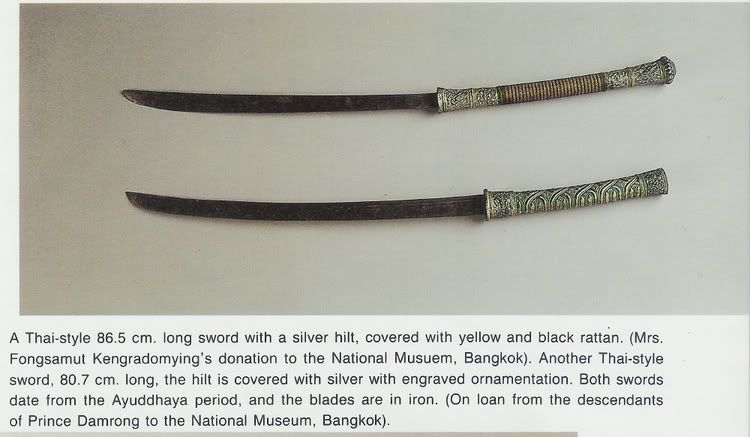 
|
|
|

|
|
|
#4 |
|
Member
Join Date: Aug 2007
Location: CHRISTCHURCH NEW ZEALAND
Posts: 2,813
|
I have had this piece for a while now,and it came to me as being of Khmer or Cochin origin. Having seen the pics posted here, it at least looks as if the shape could be influenced by Japanese swords/blades. Condition is not wonderful but is certainly original.
The bamboo piece on the scabbard was there when I originally got this sword and I would be interested to know if anyone can shed any light on its meaning. Regards Stuart |
|
|

|
|
|
#5 |
|
Member
Join Date: Aug 2007
Posts: 865
|
Interesting piece Stu....I've seen more Lao, Cambodian and Vietnamese pieces with guards in kind of a Japanese/ European influence.
Here are some pictures of a sword on the wall at the Royal Barge Museum..it also has a guard: 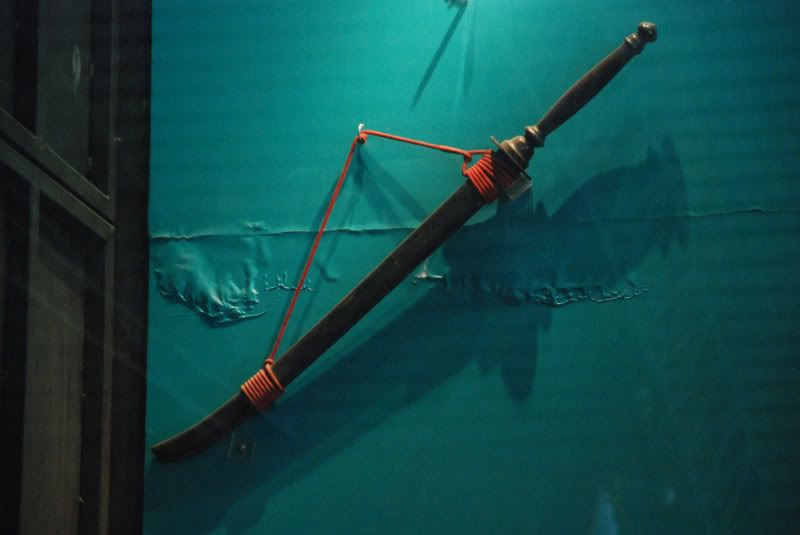 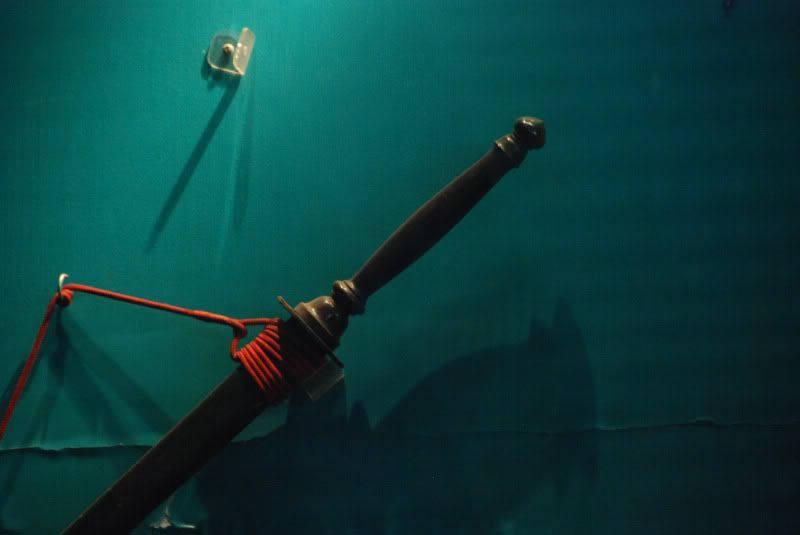 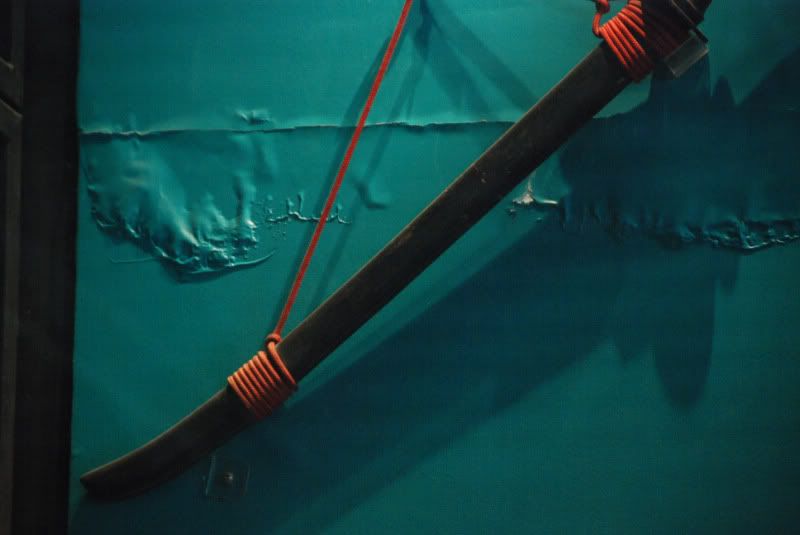 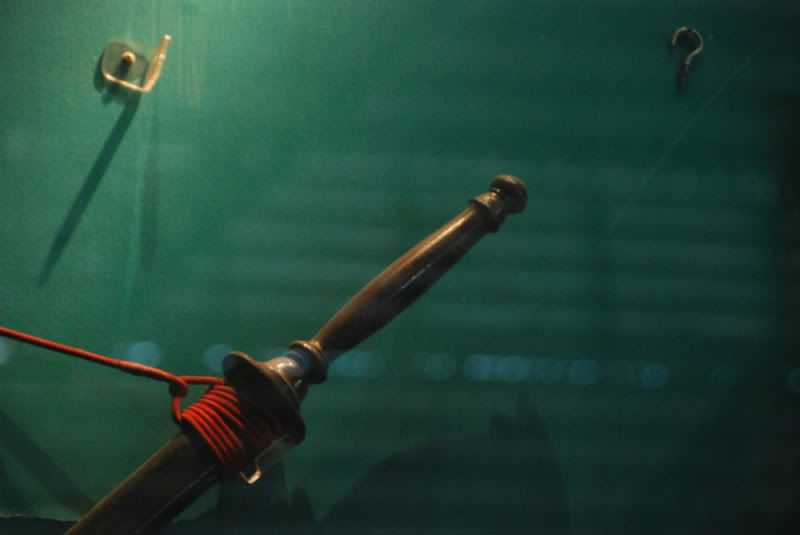
|
|
|

|
|
|
#6 |
|
Member
Join Date: Jun 2006
Posts: 179
|
For further referance. Here is some detail from a Daab in the style of top pic from the National Museum. Very similar wrap design to Mark's. Same oval cross-section as well. This one however, has a blade with a similar profile to that of the rattan-handled Daab in the same pic.
|
|
|

|
|
|
#7 |
|
Member
Join Date: Aug 2007
Posts: 865
|
DhaDha, That is a fantastic looking handle...I really have to see the National Museum...somehow I've never made it there yet.
It reminded me of a beautiful metro shan pieces listed on Mark's Dha Research Index...C0046   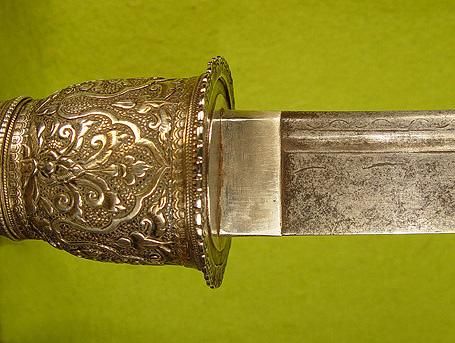 Japanese influence can be seen obviously with the habaki. |
|
|

|
|
|
#8 | |
|
Member
Join Date: Dec 2004
Posts: 987
|
Quote:
|
|
|
|

|
 |
|
|